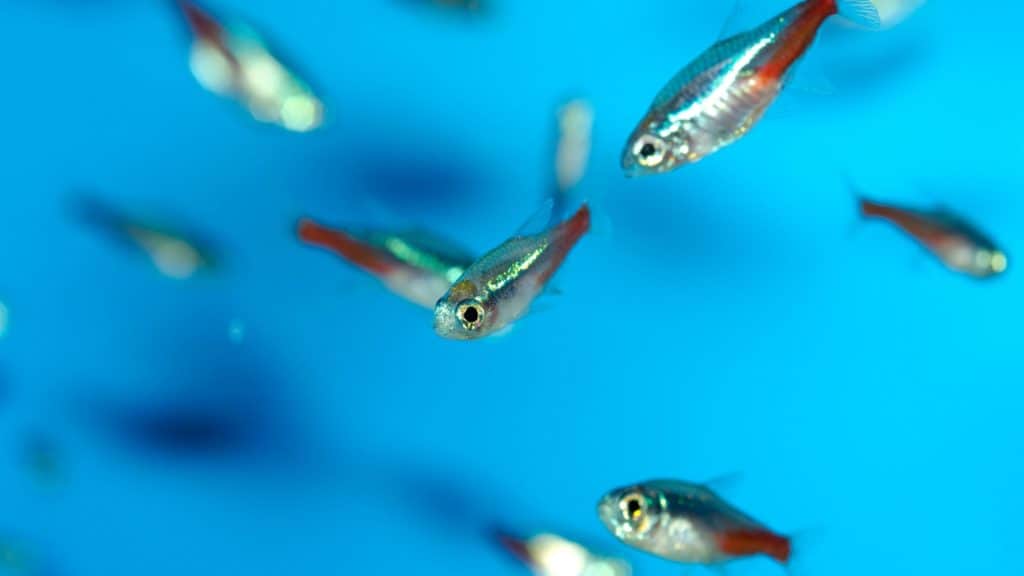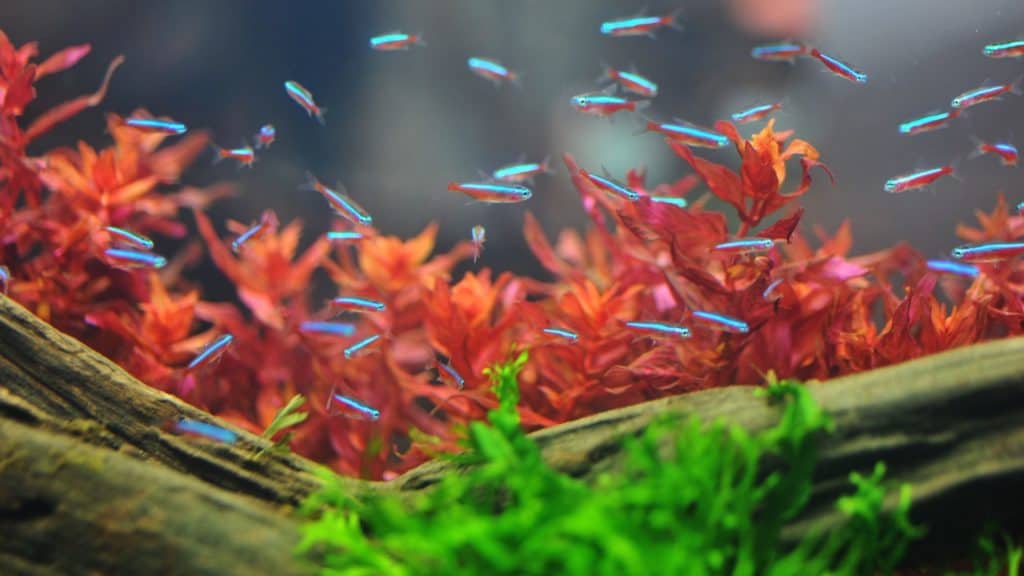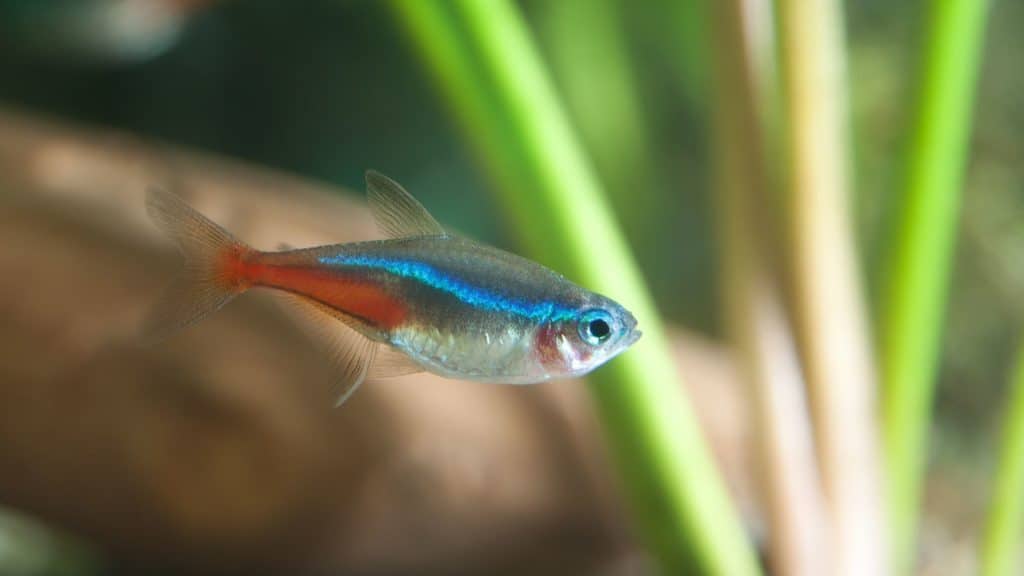Neon tetra fish are one of the most popular aquarium fish. They are small, brightly-colored and very active. These little fish are a joy to watch in an aquarium and they are easy to care for. In this blog post, we will discuss some fun facts about neon tetra fish. We will also provide some tips on how to care for them properly. If you are thinking about adding neon tetra fish to your aquarium, be sure to read this post first!
Table of Contents
11 fun facts about neon tetras
Let’s have a look at some fun facts about neon tetra fish.
Neon’s are very popular
They’re on of the most popular pet fish with around 1.8 million sold in the USA each year!
The neon fish is probably one of the best choices for novices and first-time aquarium owners. They are robust pets that require minimal care. One of the things that makes neon tetras so popular is their active nature. They are always swimming around and exploring their tank.

Neon’s natural habitat
In the wild, neon tetras live in South America where they inhabit streams, ponds and rivers. They are a migratory fish and they often swim long distances in order to find food.
Neon Tetras are schooling fish
One of the best things about neon tetra fish is that they are very active and entertaining to watch. However, they are happiest when kept in schools, meaning that you do not have to keep them interested or active, as they do this on their own.
Ideally you should have a minimum of 6 neon tetras.
These schooling fish can swim in such orderly lines that they may both defend themselves from predators and enjoy a sense of togetherness and security.
Neon Tetras are sensitive to water changes
Neon tetra fish are very sensitive to any sudden changes in the water temperature, pH level, or water hardness. However, as long as you provide them with a stable environment and give them basic care, they will thrive.
Neon tetras are actually Omnivores!
Since neon tetra fish are omnivorous, they will happily eat a variety of food. They can be fed a diet of commercially-prepared food pellets or flakes, or you can also give them a diet of live food.
Neon tetras are omnivorous and they eat both plants and animals. In the wild, their diet consists of insects, crustaceans, small fish and plant matter.
Some good examples of live food that you can feed neon tetras include: bloodworms, brine shrimp, blackworms and tubifex worms. Just be sure to only offer them a limited amount of live food, as too much can negatively affect their health.
Neon tetras live longer in the wild
For such tiny-sized fish, neon tetras have a surprisingly long lifespan. Indeed, these amazing creatures can live up to even 10 years in their natural wild habitats. In an aquarium, however, they will typically live for around 3 years.

Most neon tetras are bred in captivity
Most neon tetras that we see across aquariums nowadays are, however, bred in captivity. This is because they are a very popular fish and they are bred in large numbers to meet the high demand for them.
Female Neon Tetras lay lots of eggs!
When neon tetras breed, they will typically lay hundreds of eggs. The male neon tetra will swim around the female until she is ready to release her eggs, and then he will fertilize them.
They’re one of the smallest tropical fish
Neon tetra fish are one of the smallest pet choices available when it comes to aquatic and terrestrial species. They typically only grow to be around 1.5 inches in length, making them a great choice for those who want a small pet but don’t want to commit to a fish that requires a lot of care and maintenance.
They’re an excellent choice for community tanks
Neon’s are a fantastic choice as an additional fish to your aquarium. They may be the ideal option for you if you want to add some life to your community tank. Indeed, they are renowned for their mild nature.
When adding new fish to your aquarium, it is important to do your research first and make sure that they will get along well with your current inhabitants. Some fish may be aggressive and may eat neon tetras, so it is important to choose such fish which will not eat your neon tetras!
They can lose their color at night!
This is a known fact amongst neon tetra enthusiasts – neon tetras will lose their bright colors at night. This is because they have chromatophores that allow them to change color in order to blend in with their surroundings. So, while they are brightly colored during the day, they will typically appear more gray or black at night.

Summary
Do you have a neon tetra? Are there any fun facts that you know that we didn’t cover? Let us know in the comments and we’ll update this article.

